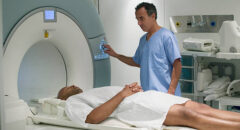
Depending on the type of multiple sclerosis (MS) that you’re dealing with, it’s possible to go through cycles of remission and relapse. This can happen with relapsing-remitting MS. While there are ways to reduce the risk of having a relapse, there is little that can be done to prevent them entirely. Sometimes you can handle an MS flare-up with some effective at-home remedies but there are a few times when your doctor needs to get involved. Since it’s best to start the treatment quickly, it helps to know when a relapse is an emergency.
When To Call Your Doctor
Typically, a relapse is defined as having recurring symptoms for at least 24 hours. That doesn’t mean you have to wait a full day before contacting your doctor. As long as you’re having symptoms of a relapse, you can reach out.
Those symptoms include numbness, dizziness, trouble maintaining your balance, pain, and blurred vision. It’s possible that your doctor will suggest trying at-home remedies like over-the-counter painkillers, heating pads, and resting.
If those methods don’t help or the symptoms get worse, they’ll want to see you.
When To Head To The Emergency Room
While many doctors prefer that their patients stay out of the emergency room, there are times when it will be unavoidable. If the pain you’re feeling is debilitating, then it’s best not to stay at home.
Having blurred vision in one or both eyes might not be cause for concern, but being completely unable to see is an emergency situation.
The same can be said for weakness, numbness, or loss of balance that severely impedes your ability to move around.
Doctors are particularly concerned about people who have other chronic illnesses. It’s possible for you to have an issue with another illness while experiencing an MS relapse.
For example, people with a heart condition may have chest pains that could be attributed to a relapse. Alternatively, an emergency issue could arise during a relapse.
Some people have been known to have a stroke at this time. With that in mind, it’s important to pay attention to your different symptoms in case they’re unrelated to your MS.
If you decide to go to the emergency room, make sure to tell the doctors there of your condition as well as any medication you’re taking. When you’ve been released, inform your primary doctor of what sent you to the emergency room and the treatment you received. They might want to conduct further tests.

What Kind Of Treatment Should You Expect?
In most cases, you’ll be given high doses of corticosteroids to alleviate your symptoms. This medication is designed to reduce the inflammation in the body caused by multiple sclerosis.
Typically, it will be administered intravenously until your symptoms have abated and can be done in a hospital or an outpatient facility.
When you’re released, the doctor will prescribe a regimen to taper off the corticosteroids, as it’s not recommended that people stop taking it abruptly.
READ: What You Must Know About Relapsing MS
Some people don’t respond well to corticosteroids because MS has given them more severe neurological symptoms. If that’s the case with you, the doctors will administer a plasma exchange. This procedure takes place over a period of three to five days and includes filtering potentially harmful antibodies from your blood. In the case that your MS relapse has affected another chronic illness, that will be treated accordingly.
Bear in mind that these treatments will have side effects, so you’ll need to be prepared to deal with those as well. For example, corticosteroids can cause insomnia, an upset stomach, and mood changes.
The symptoms of an MS relapse can be scary, even if you’ve had one before. If you’re still debating whether to go to the emergency room or to make a doctor’s appointment for the next day, call your doctor. It’s easier for a professional to sort through your symptoms and anticipate how they might change over time.
FAQ: Understanding MS Flares and Relapses
What does an MS flare feel like?
An MS (Multiple Sclerosis) flare, also known as a relapse or exacerbation, involves the appearance of new symptoms or the worsening of old ones. These symptoms can vary widely depending on which part of the central nervous system is affected. Common sensations and experiences include:
-
Numbness or tingling in the limbs or face
-
Muscle weakness or coordination problems
-
Vision issues, such as double vision or optic neuritis
-
Fatigue that is more severe than usual
-
Cognitive difficulties, including memory or concentration problems
-
Pain or uncomfortable muscle spasms
Everyone’s experience of a flare is different, but the key feature is a noticeable and persistent change in neurological function.
How long does an MS relapse usually last?
MS relapses typically last at least 24 hours and can continue for several days to a few weeks or even months. By definition, a relapse is separated from the previous episode by at least 30 days of stability or improvement. Recovery can be:
-
Complete, with symptoms fully resolving
-
Partial, where some symptoms improve but not entirely
-
Minimal, where the symptoms remain or only slightly improve
The duration and severity depend on the individual, the type of MS, and the location of the affected nerves.
What to do during an MS relapse?
If you think you’re experiencing a relapse, it’s important to:
-
Contact your neurologist or MS care team promptly. They can confirm whether it’s a true relapse or something else (like a pseudo-relapse caused by infection or heat).
-
Document your symptoms, noting what’s different, when it started, and how it’s progressing.
-
Avoid stressors like overheating, infection, or overexertion.
-
Follow prescribed treatment, which may include corticosteroids like methylprednisolone to reduce inflammation and speed recovery.
-
Rest and conserve energy — fatigue can worsen symptoms.
Early intervention can sometimes reduce the severity or duration of a relapse.
What do MS relapses look like?
MS relapses are unpredictable and can affect different parts of the body. They might include:
-
New symptoms, such as sudden vision loss or difficulty walking
-
Worsening of old symptoms, like previously mild numbness, becoming more intense
-
Functional impairments, such as problems with balance, bladder control, or speech
-
Subtle changes, like increased clumsiness or memory lapses
Each relapse reflects new inflammation or damage to nerve pathways. MRI scans often show new or active lesions during a relapse, helping clinicians confirm the diagnosis.









